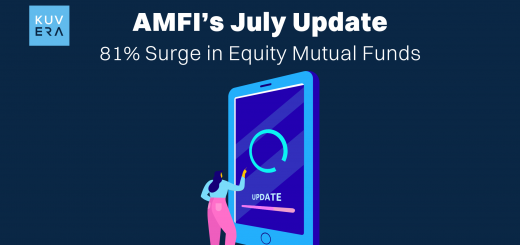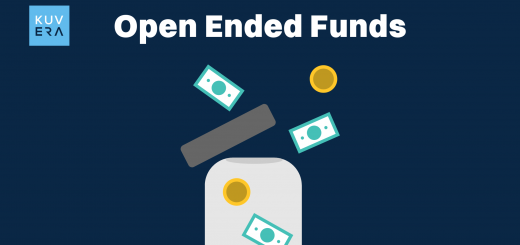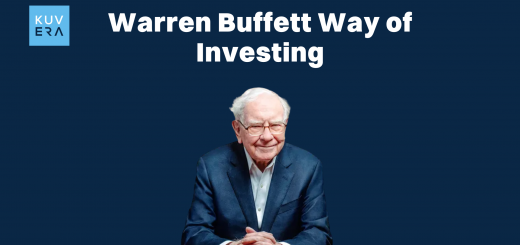Before we learn about gilt funds, let’s hear a story.
Once upon a time in the bustling town of Investipur, there lived a wise old man named Mr. Patel, who was known for his deep understanding of investments. Among his many followers, a curious young man named Rohan wanted to learn the secrets of a safe and reliable investment.
One sunny morning, Rohan approached Mr. Patel. “Master,” he asked, “I’ve heard of something called ‘Gilt Funds.’ Can you explain them to me?”
Mr. Patel smiled and said, “Ah, Gilt Funds. Let me tell you a story.”
He began, “Imagine a large kingdom ruled by a wise and trustworthy king. To develop the kingdom, the king sometimes needed money—perhaps to build roads, schools, or hospitals. So, he would issue promises called ‘bonds’ to the people, saying, ‘If you lend me money today, I will return it after a certain period, with a little extra as interest.’ Because the king was highly reliable, everyone knew they would get their money back. These promises were known as government securities, or ‘gilt-edged securities.’”
Rohan nodded, intrigued.
Mr. Patel continued, “Now, imagine there’s a group of skilled merchants in the kingdom. They gather money from villagers and invest it exclusively in these royal bonds. This way, even the villagers who don’t understand investments can still benefit from the king’s reliability. These merchants are like today’s Gilt Fund managers.”
“So, a Gilt Fund is a type of mutual fund that only invests in government bonds?” Rohan asked.
“Exactly!” said Mr. Patel. “Gilt Funds are considered one of the safest investments because the government rarely defaults on its loans. However,” he added with a knowing look, “there is a twist. The value of these bonds can go up or down depending on changes in interest rates. If the kingdom lowers its interest rates, the old bonds, which offer higher interest, become more valuable. On the other hand, if interest rates rise, the bonds lose some value.”
Rohan scratched his head. “So, Gilt Funds aren’t entirely risk-free?”
“No investment is,” Mr. Patel said gently. “But compared to many other options, they are relatively safe. They’re great for people who prefer stability and are willing to hold on to their investments for a few years to ride out interest rate fluctuations.”
Rohan smiled. “Thank you, Master. I now understand that Gilt Funds are like trusting the king’s promise—a safe option, but with the winds of interest rates to consider.”
Likewise, According to AMFI, gilt funds can be understood as follows: When you lend money, the critical thing to check is how credible the borrower is. In terms of credibility, nothing surpasses the government. So, when you invest in gilt funds, you’re essentially investing in central or state government bonds.
Further in this regard, the top 10 Gilt funds with 1 year returns in 2024 are tabled below:
Top 10 Gilt Funds with 1-year Return
| S. No. | Name of the Fund | 1 Yr return (%) | TER (%) | Fund House |
|---|---|---|---|---|
| 1 | Bandhan Government Securities Investment Growth Direct Plan | 11.1 | 0.52 | Bandhan Mutual Fund |
| 2 | DSP Gilt Growth Direct Plan | 10.78 | 0.57 | DSP Mutual Fund |
| 3 | Invesco India Gilt Growth Direct Plan | 10.62 | 0.46 | Invesco Mutual Fund |
| 4 | Edelweiss Government Securities Growth Direct Plan | 10.44 | 0.47 | Edelweiss Mutual Fund |
| 5 | Axis Gilt Growth Direct Plan | 10.29 | 0.35 | Axis Mutual Fund |
| 6 | PGIM India Gilt Growth Direct Plan | 9.98 | 0.5 | PGIM India Mutual Fund |
| 7 | Baroda BNP Paribas Gilt Growth Direct Plan | 9.87 | 0.14 | Baroda BNP Paribas Mutual Fund |
| 8 | Nippon India Gilt Securities Defined Maturity Date Growth Direct Plan | 9.69 | 0.5 | Nippon India Mutual Fund |
| 9 | Nippon India Gilt Securities Growth Direct Plan | 9.69 | 0.5 | Nippon India Mutual Fund |
| 10 | Aditya Birla Sun Life Government Securities Growth Direct Plan | 9.64 | 0.49 | Aditya Birla Capital Mutual Fund |
Source: Kuvera; December 29, 2024.
The above data indicates that the Bandhan Government Securities Fund delivered the highest one-year return at 11.1% with a reasonable Total Expense Ratio (TER) of 0.52%, followed by DSP Gilt and Invesco India Gilt with strong returns of 10.78% and 10.62%, respectively. Baroda BNP Paribas stood out for its ultra-low TER of 0.14%, and the Axis Gilt achieved a return of 10.29% with TER at 0.35%. The remaining funds, including Nippon India and Aditya Birla Sun Life, offered steady returns in the range of 9.6%-10% with moderate expense ratios, making them reliable options for investors seeking balance.
Elaborating further, Gilt funds offer several benefits, as reflected in the performance data:
1. Stable Returns
Gilt funds are known for stability due to their exclusive investment in government securities.
2. Low Credit Risk
Since gilt funds invest in government-backed securities, the risk of default is negligible. This makes them a safer choice for conservative investors compared to other debt funds that may involve corporate bonds with credit risk.
3. Diverse Cost Options
The data highlights options for investors with different cost preferences. Baroda BNP Paribas Gilt Fund has an ultra-low TER of 0.14%, offering cost efficiency, while funds like Invesco India Gilt (TER: 0.46%) balance cost with strong returns (10.62%).
4. Suitable for Interest Rate Cycles
Gilt funds benefit during periods of falling interest rates, as bond prices rise, leading to capital appreciation.
5. Reliable Long-Term Investment
Gilt Funds provide steady returns, making them suitable for investors looking for long-term stability and consistent income.
However, when investing in Gilt funds, be cautious about the following factors:
- They are sensitive to changes in interest rates, which can lead to a decrease in the fund’s value;
- They have varying TERs, with higher TERs indicating that a larger portion of returns is used for management;
- They face inflation risk, as higher inflation may reduce the purchasing power of returns;
- They may face liquidity risk during periods of financial stress or economic uncertainty;
- They are better suited for long-term investments, as short-term market fluctuations can affect returns;
- They carry concentration risk, as they are focused on government securities, limiting diversification.
Following are the recently launched gilt fund schemes:
| S. No. | Name of the Fund | 1 Yr return (%) | TER (%) | Fund House |
|---|---|---|---|---|
| 1 | Union Gilt Growth Direct Plan | 9.2 | 0.7 | Union Mutual Fund |
| 2 | Quant Gilt Growth Direct Plan | 8.45 | 0.51 | Quant Multi Asset Multi Manager |
As Rohan embarked on his journey as a savvy investor, he kept Mr. Patel’s wise story about gilt funds close to his heart. Similarly, by investing in gilt funds, individuals can achieve a balance of safety, reasonable returns, and the flexibility to select funds based on cost and performance preferences. However, it is of utmost importance to understand factors such as risk tolerance, investment horizon, cost implications, etc., in order to make informed gilt fund investment decisions. Hence, read all scheme related documents carefully before investing.
Wrapping Up
To sum up, gilt funds India can help your portfolio for both diversification and growth, especially for investors seeking exposure to diverse investments. The strong 1-year returns across various fund houses can illustrate the sector’s growth potential. By analysing the TER and returns, investors can make informed decisions about which funds align with their financial goals and risk appetite.
Interested in how we think about the markets?
Read more: Zen And The Art Of Investing
Watch here: Is UPI Killing the Toffee Business?












